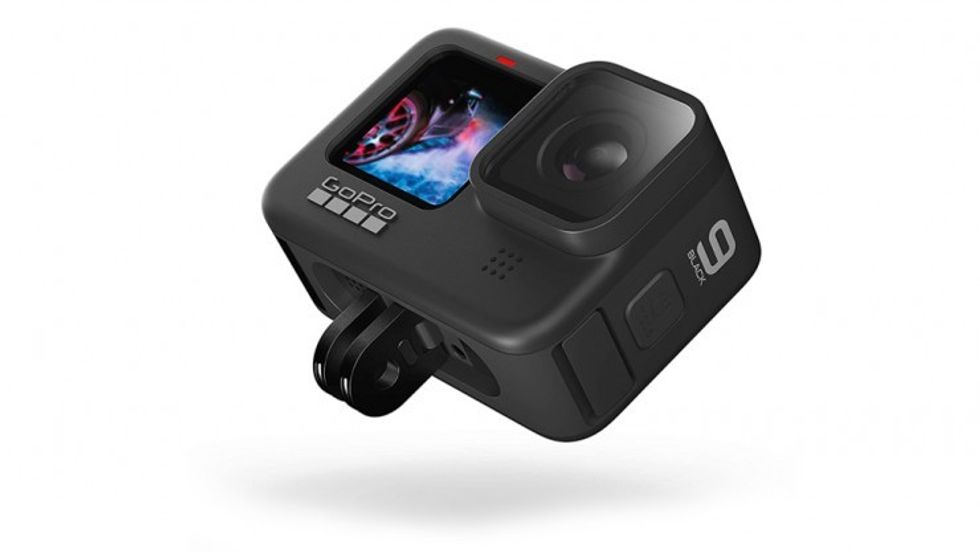How WiFi 6e Will Upgrade Your Internet Experience
WiFi 6e is here, and it offers plenty of room for everyone.

According to research, the average number of wireless devices connecting to WiFi networks has doubled in recent years and is expected to triple by 2023. As a result, if you’ve been having trouble keeping your WiFi connection lately, you’re not alone.
Help is on the way in the form of WiFi 6e.
Before explaining what exactly WiFi 6e is and how it can help creators, let’s dive into a little WiFi overview.
WiFi Standards
Just about every WiFi device you own today is possible because of standards created by the IEEE.
Those standards go back decades and are being implemented by another group called the Wi-Fi Alliance, which is made up of essentially every major company that creates WiFi devices—Apple, Microsoft, Intel, Samsung, Cisco, etc.
The Wi-Fi Alliance makes it easier for companies to adopt those standards and for consumers to understand the latest technology.
For instance, if you have ever bought a router in the past, you might have seen a string of numbers like 802.11ac or 802.11n on the box without really knowing what that means. Is “ac” or “n” compatible with my network? Is “ac” faster than “n”? For example:
- WiFi 6: 802.11ax
- WiFi 5: 802.11ac
- WiFi 4: 802.11n
The Wi-Fi Alliance has since simplified the naming scheme. For example, 802.11ac is now WiFi 5, which theoretically, makes it easier for consumers to understand which network is better. The higher the number, the better and faster the network.
Many of us are familiar with the 2.4GHz and 5GHz frequency bands. Most WiFi devices today use the WiFi 5 (802.11ac) standard, which operates in both the 2.4GHz and 5GHz bands.
While we won’t get into the specifics as to why WiFi 6 is faster/better than WiFi 5 and so on, what’s important to know is that those devices run on the 2.4GHz and 5GHz band.
The difference between those two frequency bands is that the 2.4GHz is built for distance, while 5GHz is built for speed. It’s why most home routers support both 2.4GHz and 5GHz. If you’re having trouble connecting to your 5GHz network, it’s most likely because you’re further away from the router. The 5GHz spectrum suffers from reduced range since it can’t penetrate solid objects like walls and floors as well as 2.4GHz.
Devices like your Amazon Alexa, Apple TV, laptop, router, even internet-connected refrigerators all connect using an IEEE standard on either the 2.4GHz or 5GHz band. The result is that your WiFi router can be congested as it prioritizes network traffic.
More recently the IEEE devised a new standard called 802.11ax, which the Wi-Fi Alliance calls WiFi 6.
Like WiFi 5, WiFi 6 devices also use frequencies in the 2.4GHz and 5GHz bands. But WiFi 6 is the fastest yet. Intel says it can reach a maximum throughput of 9.6 Gbps, whereas WiFi 5 tops out at 3.5 Gbps on WiFi.
While faster speeds are welcome, where WiFi 6 shines is it allows your router to better communicate with multiple devices at once. This can make for stronger connections between devices as more are added to the network. But with the faster speeds comes the reduction in range.
The Even Newer WiFi 6e (6GHz) Standard
WiFi 6e is the latest standard and uses an entirely new frequency band, 6GHz. So devices that are WiFi 6e compatible are not part of the 2.4GHz or 5GHz band at all, and instead, run on 6GHz, which is an unlicensed frequency band. Meaning, companies do not need to go through the long and expensive process of getting a license to use the frequency band.
The WiFi 6e standard is based on WiFi 6 and has similar fast speeds, but the idea behind it is to free up space for your computers and streaming devices to operate in the fast lane, while your appliances run at the lower spectrums.

Well, wireless microphones, drones, and wireless video transmitters all operate at similar frequencies. Even though it’s rather crowded, the film industry has generally stayed with the 2.4GHz band because of its longer range.
Using encrypted signals and beamforming techniques, these devices have been able to operate in the crowded space and manage.
Some manufacturers, like Deity, state that they have no plans to venture out into the higher spaces.
“We do not see a future with Wi-Fi 6e for the location sound industry,” Andrew Jones told No Film School. “It was a two-year challenge for us at Deity to make a 2.4GHz microphone system that offers the transmission range filmmakers demand. In our exploring 5GHz systems we quickly realized the narrow frequencies just don’t have the ability to punch through walls on film sets to the degree users need. Going further up in the spectrum to 6GHz and beyond only makes getting any kind of range that much more difficult. It’s a matter of physics.”
GoPro, by contrast, has leaned into the fast lane of WiFi 5 and has incorporated a dual-band transfer setup since the design of the HERO5 Black action camera.
“GoPro cameras utilize built-in, dual-band 5GHz and 2.4GHz WiFi, which users can select based on their region and preference,” said Fong Tran, GoPro Principal Product Manager. “The additional 5GHz band provided three-times faster content offload speeds. The latest v1.5 firmware for HERO9 Black added up to 30% faster wireless offload speeds for even faster transfers to the GoPro App.”
This makes sense, considering using WiFi to transfer video to a mobile device doesn’t have to rely on distance to be accomplished. By moving along the digital road less traveled, GoPro can take advantage of a performance boost, without the issue of a congested spectrum. So WiFi 6 could more than likely be a part of their future design plans.
Others, like DJI, Blackmagic Design, and RØDE, however, are keeping things close to the chest. We reached out to them, but they have told us that they don’t comment on future design plans or feature sets.
That’s understandable. It’s a very competitive space, and companies often rely on a “secret sauce” of custom software tweaks to get the most performance out of their hardware. RØDE, for instance, deals with congestion on the 2.4GHz band by encrypting their signal. That way, there’s no bleed-through from errant devices competing for space.
As for smartphones and tablets, the latest iPhone 12 series supports WiFi 6. The same for Android phones from Samsung and others. While we're on the subject of phones, 5GHz is completely different from 5G, so don't confuse the two. That said, phones will most likely start using the unlicensed 6GHz band in the future.
As you can imagine, faster WiFi is becoming more important in our daily lives as we work from home, stream high-resolution video, and multitask dozens of web browsers at once. WiFi 6 is going to provide some blazing speeds, and WiFi 6e is going to help alleviate WiFi congestion in the future. However, there are downsides.
Like 5GHz, 6GHz does suffer from range issues. If you live in a large home or work in a big office, you may need to set up a mesh network or WiFi repeater to reap the benefits. Plus, not all WiFi 6 devices will also support WiFi 6e. So make sure to double-check what you need before completing a purchase.
On top of that, not many countries have started to license the 6GHz spectrum. So far, the WiFi 6e certification program says the U.S., UK, Europe, Chile, South Korea, and the United Arab Emirates have opened 6GHz.
As far as the equipment we use to make films, WiFi 6 and WiFi 6e compatible devices might be a ways away. WiFi 6 could be useful in video transmitters or newer wireless audio if the range doesn’t drop. Right now, most 2.4GHz wireless audio gets about 300 feet of range. It wouldn’t make sense for a company to invest in WiFi 6 if the range isn’t the same (or better).
So do you have to run out and buy a WiFi 6 or WiFi 6e router? No. Are there any available? Yes. Here are a few:
However, if your devices are not WiFi 6/6e enabled (that includes your smartphones and tablets) it won't make a difference. At the very least you will be future-proofed.
Have any questions? Drop them in the comments.














